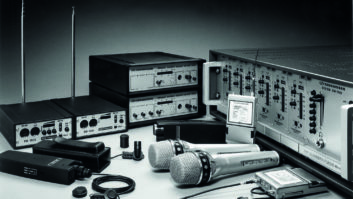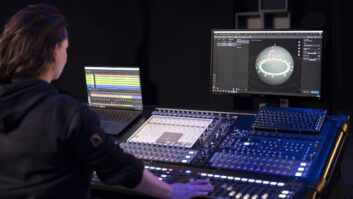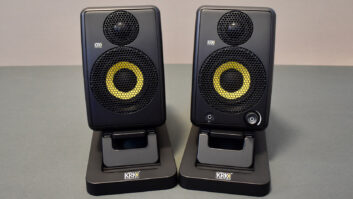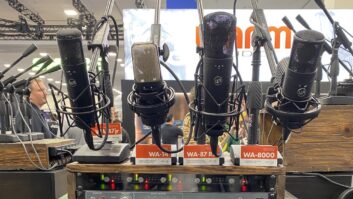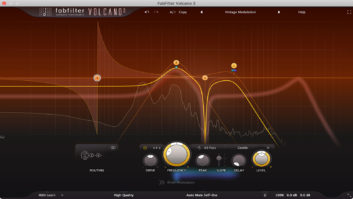Sound designer Dane A. Davis, who is currently working on TheMatrix: Revolutions, has been working with Sennheiser mics.
Davis continually amasses sound effects in the Danetracks library.While collecting sounds for use in the third Matrix installment,in which the machines invade the humans in the city of Zion, one of themachines being recorded exacted its revenge on a pair of Sennheiser MKH800-P48 variable-pattern condenser microphones. Subsequently repairedby Sennheiser, they have now been returned to active duty.
Pictured: Dane Davis, president of Danetracks, puts the NeumannSolution-D microphones and Sennheiser MKH 800s in peril with arcwelding sparks.
“We never intentionally abuse mics,” said Davis, “but we put them inall kinds of difficult situations. Considering that we’re firing50-caliber rifles and machine guns and cannons at targets within a fewfeet of these mics, it’s pretty amazing how rarely they getdamaged.
“We’re always trying to find new sounds,” he continued. “A lot oftimes, these are new machines that haven’t been recorded before.”Having captured the sounds of an arc welder, the next session involvedan electronic discharge machine. “The arcs are normally very tiny,unlike the arc welding, where I was deliberately disintegrating allkinds of small pieces of metal. This machine made these tiny arcs thatare normally submerged in solvent. It made unbelievably cool,electronic gurgling sounds. The arcs were only about one-eighth of aninch long, and although the solvent would sometimes spatter, nothingseemed to go through the screens of the 800s, which were set up about10 inches away in an X-Y pattern pointing at the arc. These tiny arcsmust have been throwing microscopic pieces of hot slag out, and maybethe 48-volt charge across the capsule attracted it and somehow pulledit through the screen onto the capsule. It seems so far-fetched, butit’s the only explanation. There were little pieces welded to thecapsule.”
Pictured: machine shards welded into the Sennheiser MKH 800.
“For that tiny of an amount to get through the screen of themicrophone and adhere to the capsule, it would have to be microscopic,”agreed Danetracks technical engineer Del Martin.
The recording setup also included a Pro Tools|HD system. “We doalmost everything at 192k now, especially when we’re using theSennheiser 800s, because they have an absolutely lovely, extendedhigh-frequency response,” Davis noted.
For more information, visit Sennheiser online at www.sennheiserusa.com.
